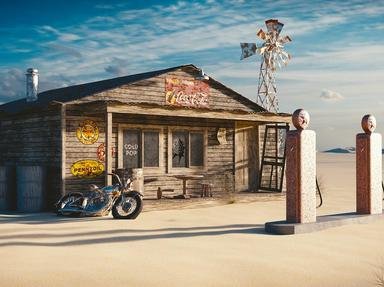Quiz Answer Key and Fun Facts
1. The number 14 song for 1956 was adapted from an 1861 ballad entitled "Aura Lee". To which Elvis Presley number are we referring?
2. The number 13 recording for 1956 was sung by Doris Day in the Hitchcock movie "The Man Who Knew Too Much". It was Day's biggest hit of the rock era.
3. The number 12 rated hit for 1956 was an instrumental recorded by Hugo Winterhalter and his Orchestra featuring the song's composer, Eddie Heywood, on piano. It peaked at number two in the Top 100 chart. A further hint... Andy Williams recorded a version of the song with lyrics that reached number eight on the same chart. What song was this?
4. Sitting at number 11 for 1956 with 1848.89 points was Johnnie Ray's biggest hit of the rock and roll era. Which song was that?
5. Ranked at number 10 for 1956 was this song, a cute little ditty performed by Kay Starr. Can you identify it?
6. The number nine ranked hit for 1956 with 1876.53 points was this song that rode the top of the Top 100 charts for five weeks. It starts with these lines:
"Take one fresh and tender kiss
Add one stolen night of bliss
One girl, one boy
Some grief, some joy"
What song was this?
7. "____________ is to linger with you
At the end of the day in a dream that's divine
_____________ is a rapture in blue
With the world far away and your lips close to mine"
This lyric comes from the number eight ranked song from 1956. If you can fill in the blanks correctly, you will name that tune!
8. The number seven ranked recording of 1956 was "Lisbon Antigua", a lush instrumental by Nelson Riddle and His Orchestra. Riddle had a long association as an arranger/conductor with which famous singer of the era?
9. Ranked at number six for 1956 was a rather mysterious song recorded by Jim Lowe. These lyrics describe Lowe's curiosity behind the mystery.
"Saw an eyeball peepin' through a smoky cloud
Behind the _____ door
When I said Joe sent me someone laughed out loud
Behind the _____ door
All I want to do is join the happy crowd
Behind the _____ door"
What color was the door that fills in the blank of this lyric? It is the title of the song.
10. The fifth ranked recording in 1956, largely due to topping the charts for six weeks, was another instrumental. Les Baxter was the artist. Fill in the blank to complete the title... "Poor People Of ________".
11. The number four ranked song for 1956 spent seven weeks at number one on the Top 100 chart accumulating 2322.57 points. Can you name it from this slice of the lyric?
"Hey now, if your baby leaves you
And you've got a tale to tell
Well just take a walk down Lonely Street"
12. "Oh I met him there in a border town
He vowed we'd never part
Though he tried his best to settle down
I'm now alone with a broken heart"
These lyrics come from the third ranked song of 1956 with 2395.99 points. What was the song's title?
13. Sitting as the number two song for 1956 with 2452.10 points was yet another Presley hit, his third to rank in the top 15 for the year. The song is also rated as the number one ranked of his long and illustrious recording career. Which hit was it?
14. The number one rated song for 1956 with 2931.03 points stayed on the Top 100 chart for 26 weeks, nine of them at number one. Here's a lyric sample and you name the song:
"Well, I never felt more like cryin' all night
'Cause everythin's wrong, and nothin' ain't right without you"
15. My 1956 wild card entry is the recording that was ranked number 18 for that year. Can you identify this hit from the following lyric sample?
"Adrift in a world of my own
I've played the game but to my real shame
You've left me to grieve all alone"
Source: Author
maddogrick16
This quiz was reviewed by FunTrivia editor
agony before going online.
Any errors found in FunTrivia content are routinely corrected through our feedback system.

